
Mosaics for Pools: Endless Possibilities
High-quality mosaics give architects and designers virtually unlimited possibilities when designing beautiful and interesting pools.
Custom-designed and unique mosaic-clad pools can be an interesting and attractive alternative for clients compared to other materials typically used in pool construction. We will convince you that it is now possible to use mosaics even for outdoor pools thanks to advanced technologies. Among various materials (such as plastic, stainless steel, or tiles), mosaics are the most universal solution.
Mosaics offer countless options for combining colors, patterns, and decor. This gives great opportunities in architecture where creative design is important. Architects and interior designers may sometimes avoid dealing with pools, which is why we now offer a perspective "from the other side".
For example, it is possible to create a mosaic that visually blends into the garden lawn. Hisbalit offers a unique mix that can be custom-configured to enhance the overall architectural expression of the house, matching the colors of the interior or exterior. There is virtually an unlimited number of color and shape combinations available - we wrote about this in detail here. Generally, water, not only in pools but also in natural water bodies (lakes, seas...), is blue at depths of around 1.5 meters. Therefore, in a pool with a standard depth of around 1.6 m, the water will always be blue. And additionally, when selected colors are used, the water - even in combination with the cladding - will look great. In general, the most aesthetically impressive colors for pool cladding are white, light gray, or beige. Water in such clad pools has a sky-blue or turquoise color and does not appear "chemically blue" - more about this can be found in our article here.
A common concern when using mosaics in pools is "Will they fall off over time?" Of course, as with any construction technology, this can happen. But if the right construction chemistry is used and technological procedures are followed, mosaics for pools are very durable, do not peel off, and do not degrade in any way.
The Spanish company Hisbalit supplies mosaics on an HT-K silicone network, which does not have this flaking issue; alternatively, mosaics can be glued on paper, where there is nothing extra between the mosaic and the construction chemistry. Therefore, concerns that mosaics would fall off in demanding pool operations are completely unfounded.
Read more articles about mosaics and tiles on the expert blog www.oblozeno.cz.
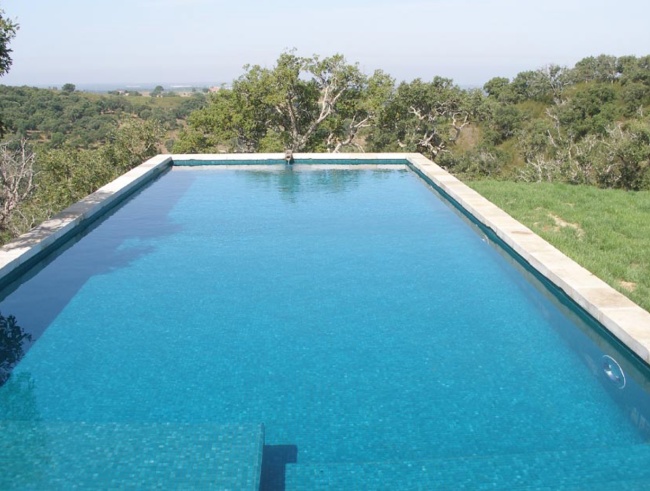 |
Mosaics offer countless options for combining colors, patterns, and decor. This gives great opportunities in architecture where creative design is important. Architects and interior designers may sometimes avoid dealing with pools, which is why we now offer a perspective "from the other side".
- Why choose mosaics for outdoor pools?
- How to work with it so that it becomes a material that enhances the value of the architectural design?
- What to avoid when using mosaics for pools?
- And does the pool always have to be blue for the water to look clean?
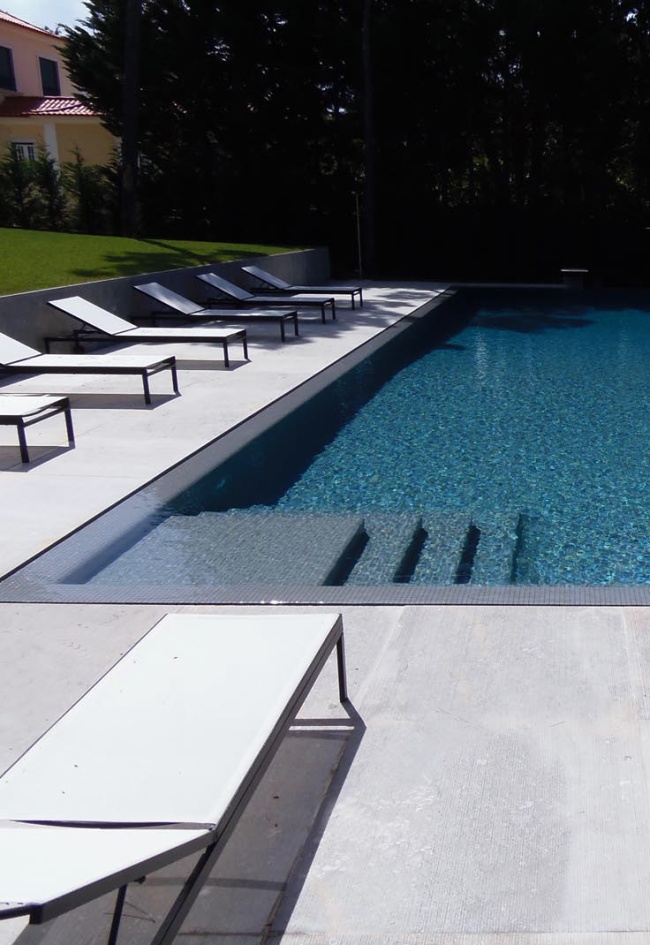 |
Indoor Pools
From an aesthetic perspective, mosaics are one of the best choices, especially when used indoors. If you are designing a pool as part of a family house or hotel, suitable materials are either tiles or mosaics as mentioned. Stainless steel or plastic pools do not look good indoors and may have several problematic aspects from a functional standpoint.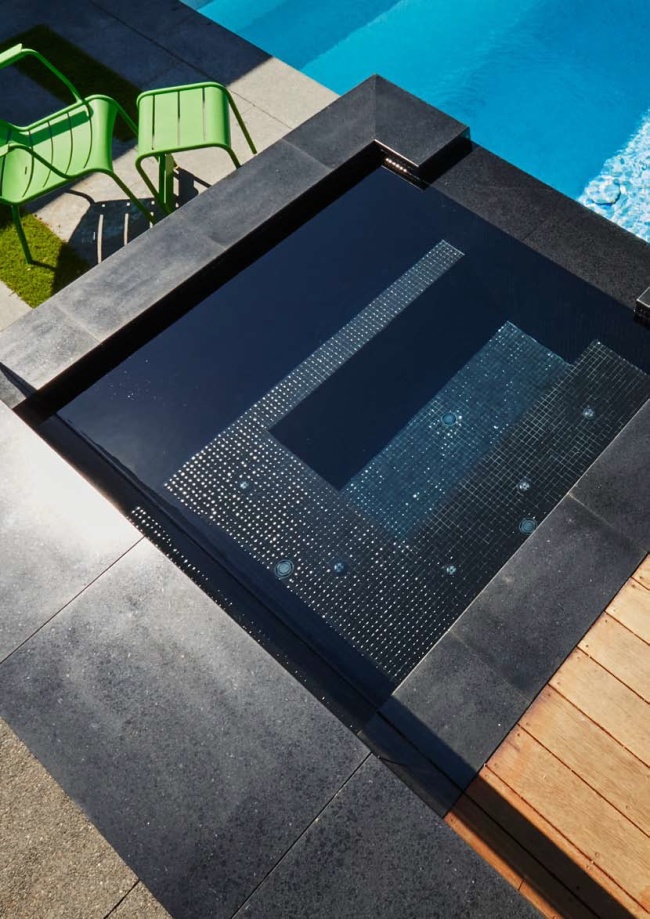 |
How to Approach Outdoor Pools
From a technological standpoint, there is no longer a need to fear using mosaics in outdoor pools. Just as this versatile material works on facades, it can also be successfully utilized in the design of outdoor pools. With the use of quality chemicals and proper technological procedures, mosaics in pools are a durable and highly creative material. They are unaffected by climatic conditions, are frost-resistant, and are completely color-stable. An important criterion that architects often consider is the possibility of custom design. Mosaics are a material that offers tremendous opportunities for creativity and authorship.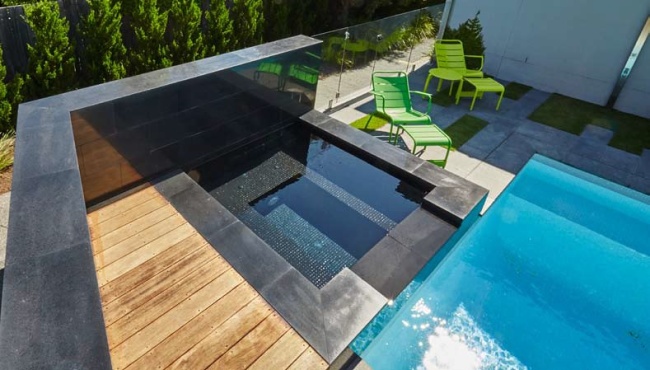 |
Color, Water, and More
A common myth that persists is about the color of the water. If the water is not a deep blue, then something is wrong... this can be simply summarized. However, that's not the case at all. A visually appealing pool doesn't have to be blue. Check our photo gallery of realized pools, see the use of different mosaic colors, and how to achieve a natural appearance of the water while integrating the pool into the overall garden concept.For example, it is possible to create a mosaic that visually blends into the garden lawn. Hisbalit offers a unique mix that can be custom-configured to enhance the overall architectural expression of the house, matching the colors of the interior or exterior. There is virtually an unlimited number of color and shape combinations available - we wrote about this in detail here. Generally, water, not only in pools but also in natural water bodies (lakes, seas...), is blue at depths of around 1.5 meters. Therefore, in a pool with a standard depth of around 1.6 m, the water will always be blue. And additionally, when selected colors are used, the water - even in combination with the cladding - will look great. In general, the most aesthetically impressive colors for pool cladding are white, light gray, or beige. Water in such clad pools has a sky-blue or turquoise color and does not appear "chemically blue" - more about this can be found in our article here.
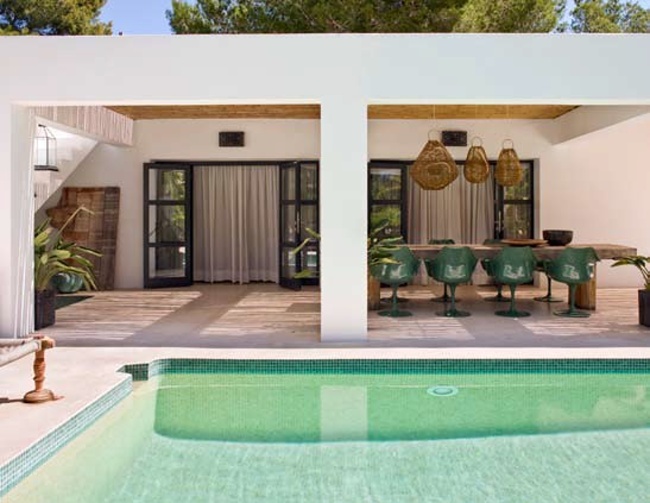 |
Technologies and Options
For pool use, the Hisbalit brand offers two types of anti-slip tiles: for steps and pool bottoms. Thanks to the mosaic's dimensions, it is not a problem to cover complex shapes, such as various curves, steps, benches, or relaxation areas. For a more luxurious aesthetic expression, we recommend mosaics with mother-of-pearl, which reflects light, making the water sparkle just like the water in a river or pond where light refracts on the waves.A common concern when using mosaics in pools is "Will they fall off over time?" Of course, as with any construction technology, this can happen. But if the right construction chemistry is used and technological procedures are followed, mosaics for pools are very durable, do not peel off, and do not degrade in any way.
The Spanish company Hisbalit supplies mosaics on an HT-K silicone network, which does not have this flaking issue; alternatively, mosaics can be glued on paper, where there is nothing extra between the mosaic and the construction chemistry. Therefore, concerns that mosaics would fall off in demanding pool operations are completely unfounded.
Our Tip:
If a mosaic piece gets mechanically damaged in the pool, this issue can be easily solved. There is construction chemistry that allows to reattach a fallen piece even in a water-filled pool. Thus, a mosaic pool is easy to repair.Read more articles about mosaics and tiles on the expert blog www.oblozeno.cz.
The English translation is powered by AI tool. Switch to Czech to view the original text source.

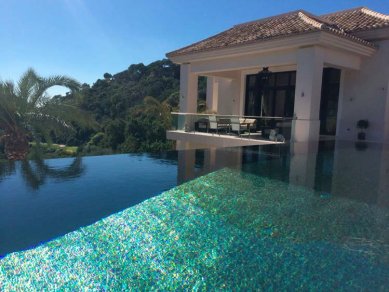
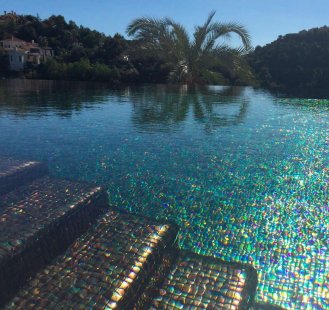
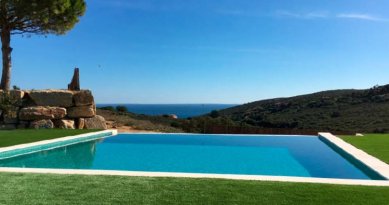
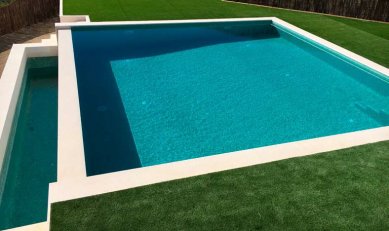
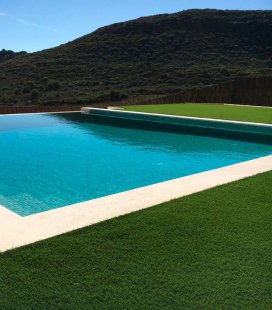
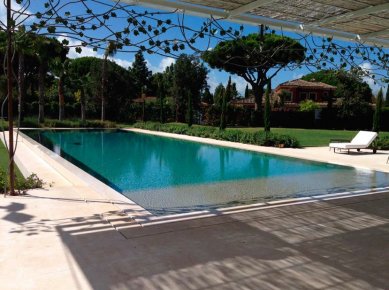
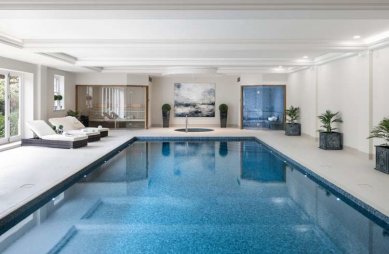
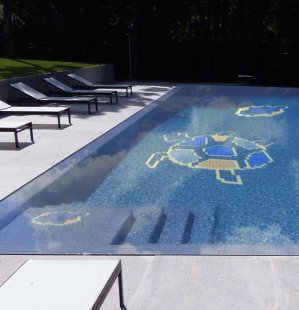
0 comments
add comment





